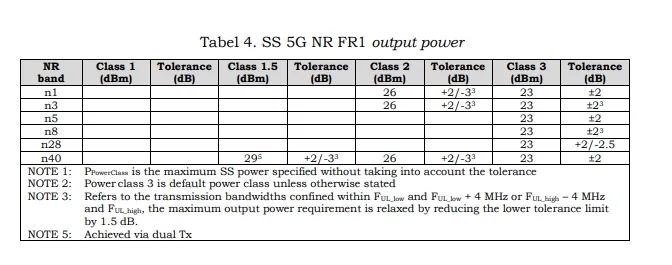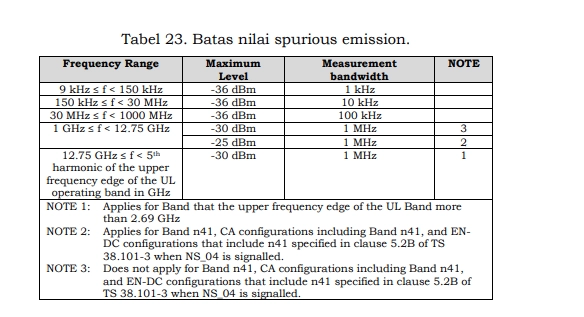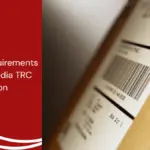5G technology uses communication technologies based on International Mobile Telecommunications (IMT) that operate within a specific frequency spectrum. This technology must meet the main requirements through a standard testing process to ensure its quality, security, and compliance with applicable regulations.
The standard testing process for 5G technology is regulated in the Decree of the Minister of Communication and Information Technology Number 352 of 2024. This standard regulates various technical aspects, including radio frequencies, transmission power, and testing methods.
5G technology, which is widely used in seat belt sensor devices, must comply with this standard to be used legally in Indonesia.
Also Read
Table of Contents
New Regulations on 5G Technology

Ministerial Decree of the Ministry of Communication and Digital No. 352 of 2024 establishes technical standards that seat belt sensor devices must meet to be used legally in Indonesia.
5G networks in Indonesia utilize several predefined frequency bands to optimize speed and capacity, resulting in faster, more stable, and responsive connections. Multiple frequencies can be combined to improve overall network performance.
The following is a list of working frequencies used in 5G networks in Indonesia:
- FDD (Frequency Division Duplex): Utilizes two distinct frequencies for transmitting and receiving data, resulting in smoother communication.
- TDD (Time Division Duplex): Uses the same frequency, but alternates within a certain time to send and receive data.
Work frequency
| E-ULTRA Operating Band | Uplink | Downlink | Dupleks Mode |
| 1 | 1920 MHz – 1980 MHz | 2110 MHz – 2170 MHz | FDD |
| 3 | 1710 MHz – 1785 MHz | 1805 MHz – 1880 MHz | FDD |
| 5 | 824 HHz – 849 MHz | 869 MHz – 894 MHz | FDD |
| 8 | 880 MHz – 915 MHz | 985 MHz – 960 MHz | FDD |
| 28 | 703 MHz 748 MHz | 758 MHz – 803 MHz | FDD |
| 31 | 452,5 MHz – 457,5 MHz | 462,5 MHz – 467,5 MHz | FDD |
| 40 | 2300 MHz – 2400 MHz | TDD | |
Channel bandwidth

The channel bandwidth and subcarrier spacing determine the maximum transmission bandwidth in a 5G network. Details are provided in Table 2 or clause 5 of the ETSI TS 138 101-1 standard.
Transmitter requirements
Every transmitter in a 5G network must meet the standards that have been set. These requirements refer to one or more of the standards listed in Table 3, which must be met under normal conditions.
| SS Type | Standard Reference |
| SS 5G FR 1 Stand Alone | Clauses II.B.1.c.1) to II.B.1.c.5) in this Ministerial Decree |
| ETSI TS 138 101-1 | |
| ETSI TS 138 521-1 | |
| 3GPP TS 38.101-1 | |
| 3GPP TS 38.521-1 |
These standards ensure that transmitters in 5G networks can operate properly, comply with technical requirements, and provide optimal connectivity for users.
Maximum output power
The maximum transmit power in 5G networks is determined based on a single component carrier and covers the entire transmission bandwidth within the available channel bandwidth.
Below is a table of maximum transmit power by frequency band in 5G networks:

Transmitter spurious emission
Spurious emissions at the transmitter are unwanted signals that appear outside the main frequency band of the device. To prevent interference with other communication systems, maximum permissible spurious emission limits have been set.
For devices with a single component carrier, this limit applies to frequencies above FOOB (Frequency Out of Band), measured from the edge of the channel bandwidth, as specified in Table 22. This limit applies to various band configurations and transmitter channel widths.
| Channel bandwidth | OOB boundary FOOB (MHz) |
| BWChannel | BW Channel+ 5 |
Table 23 also lists the spurious emission limits for various frequency ranges. These limits are set to ensure that 5G devices can operate stably without causing interference to other devices using adjacent frequencies. Through this arrangement, telecommunications devices are expected to comply with international standards, thereby helping to maintain the overall quality of the network.

Certification Process in Indonesia

For access point devices to be used legally in Indonesia, certification from DJID is required. Here are the steps to get it:
Pre-testing the device
Before official testing, the device must be pre-tested first using measuring equipment such as a spectrum analyzer.
This helps ensure devices meet technical standards before being tested in authorized laboratories.
Testing at an official laboratory
After passing the pre-testing, the gadget will be sent to an assigned official research facility to experience testing according to the guidelines stipulated in the Ministerial Decree of the Ministry of Communication and Digital No. 352 of 2024.
Issuance of certificates
After the device passes testing, an official certificate will be issued by DJID. This certificate is a requirement to market the device legally in Indonesia.
Tips to ensure standards compliance
- Stay informed about the latest regulations: Ensure you understand every detail of the Ministerial Decree of the Ministry of Communication and Digital No. 352 of 2024, including technical requirements and testing methods.
- Perform pre-testing: Before conducting the testing, perform pre-testing to ensure the device meets the required specifications. If you don’t have a measuring instrument, consider using the DJID certification service, which offers pre-testing services.
- Counsel a master: If this is your first time seeking certification, consider utilizing the services of experienced DJID certification agencies.
















